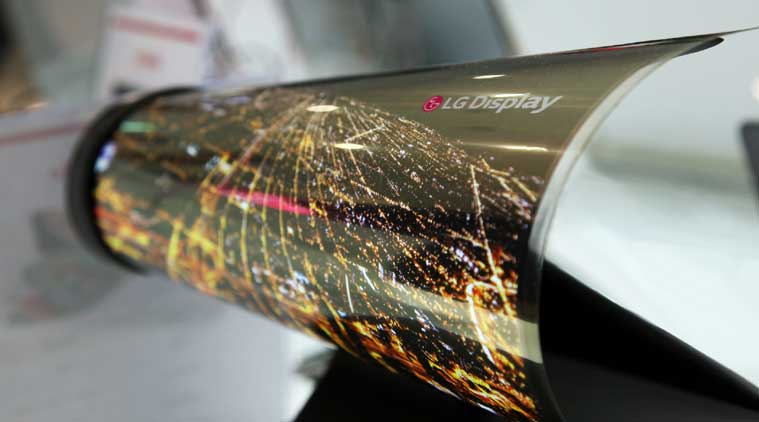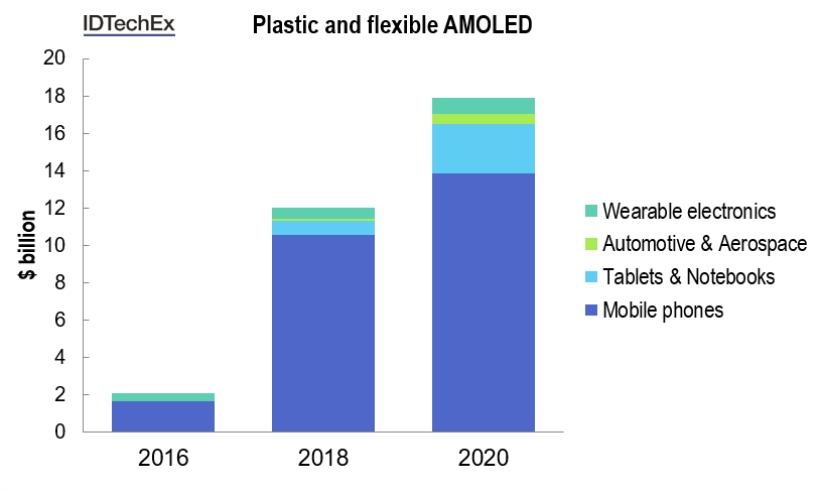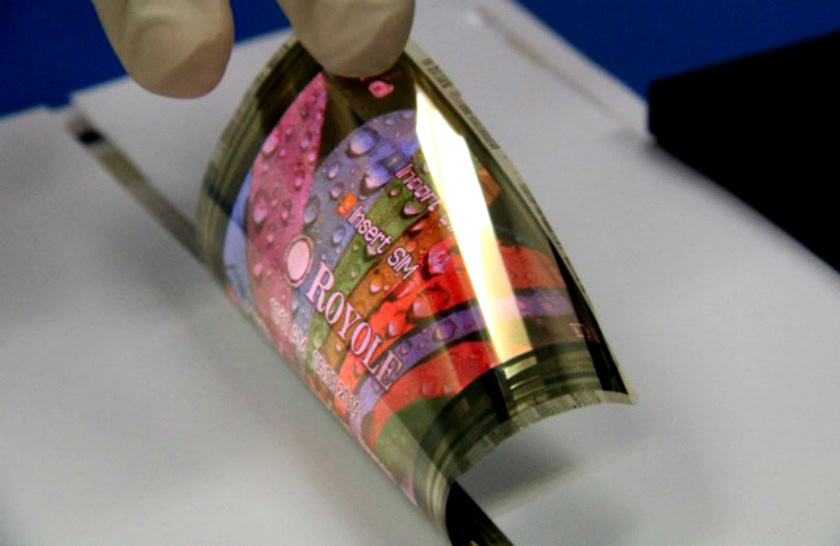Affiliate links on Android Authority may earn us a commission. Learn more.
Plastic OLED to drive huge growth in flexible smartphone panels
Published onMay 26, 2016

Flexible displays may have only made a small appearance in the smartphone market so far, but the industry for plastic OLED panels looks set for a boom across the handset, tablet, TV, and wearable segments. IDTechEx Research has forecast that the flexible OLED market will bring in over $12 billion in revenue this year, and that it could be worth $57 billion by 2026.
The growth in this market is set to be powered by a transition over to new display materials. Smaller mobile panel products will shift away from glass substrates to new plastic materials, such as polyamide. Flexible substrate products have already hit the market, including inside the Samsung Galaxy S7 Edge and the Apple Watch.
Mobile phones are expected to retain the largest share of the growing market, with tablets and notebooks also making up a notable portion come 2020. The latest flexible OLED panels, which are thinner and lighter than commonly used glass-based alternatives, can enable manufacturers to develop thinner products or claw back space for essential components, such as batteries. The automotive sector is also expected to pick up OLED displays over the next few years, once the production techniques have matured.

Looking further ahead, IDTechEx expects that developments will make it possible to create truly bendable and foldable mobile devices. We have seen a number of prototypes over the years, and the latest HoloFlex holographic smartphone prototype looks particularly interesting. However, it’s new markets in the augmented and virtual reality spaces that are expected to boost demand in the near term. Headsets from HTC, Oculus, and Sony already make use of AMOLED technology, and lighter, slimmer next-gen models will certainly be looking for improved panels.
When it comes to the TV market, glass-based displays will remain an important technology for a while longer, as scaling-up OLED production size is proving expensive. 4K OLED TVs have already landed on the market, but lower cost Quantum Dot LCD panels are well suited to to the more budget conscious corner of the market.

The forecast comes as Samsung Display and LG Display, the two main OLED display manufacturers, have announced major investments to expand their production capabilities. Samsung Display is planning to spend more than $3 billion between 2015 and 2017 on a new production line, while LG Display has committed over $9 billion worth of investment into two new manufacturing plants. With panel production finally ramping up, we can look forward to some innovative and interesting flexible products in the coming years.